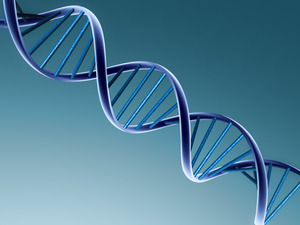Triple-X Females
A female usually has only 2 X-chromosomes in each cell. In approximately 1 per 1,000 female births, a child is born with 3 X-chromosomes in each cell. Most often this condition isn’t diagnosed until later in life. People normally have 46 chromosomes in each cell. Two of the 46 chromosomes are sex chromosomes, called X and Y. Females have two X chromosomes and males have one X chromosome and one Y chromosome. Triple X syndrome results from an extra copy of the X chromosome in each of a female’s cells. As a result of the extra X, each cell has a total of 47 chromosomes. It is not known why these chromosome aberrations appear, but it is known that they appear more frequently in children of older mothers.
Triple X syndrome is not inherited, but usually occurs as a random event during the formation of the reproductive cells. Triple-X syndrome is also known as Triplo X syndrome, Trisomy X, 47,XXX and XXX syndrome. Triple-X syndrome is listed by the Office of Rare Diseases (ORD) as a rare disease as it affects less than 200,000 people in the US population.
Newborn Triple-X girls appear normal at birth, but their average birth weight is slightly lower than that of girls with normal chromosomes and they be slightly more ‘floppy’ at birth. Some females with triple-X show none or very few symptoms and are entirely ‘normal’, others are differently affected by the severity of their symptoms. There may be a growth spurt until the age of approximately eight years of age, resulting in a taller than average final height. Girls with triple-X are often slightly quieter and more passive as babies. They often have a increased risk of learning disabilities and delayed speech and language skills. These girls also have an increased tendency to back problems. They have a slightly lower intelligence level than their siblings (the IQ may be ten to fifteen points lower than their siblings). Females with this condition are not at any increased risk for medical problems.
In most cases there are no unusual physical features but the females are usually taller than average and their weight may be low in comparison to their height. They frequently have menstrual irregularities. Most women with triple X have normal sexual development and are able to conceive children. A few may experience early onset of menstruation. Some other signs and symptoms of Triple X syndrome can include:
Increased space between the eyes
Vertical skin folds that may cover the inner corners of the eyes
Tall Stature
Small head
Speech and language delays and learning disabilities
Delayed development of certain motor skills including both gross and fine motor skills
Behavioral problems, tantrums, shyness and emotional immaturity (these problems may result in a risk of social isolation)
Seizures
Delayed Puberty
Infertility
Rarely, mental retardation
There is a slight increased risk of offspring with chromosomal abnormalities
Early menopause
Girls with Triple-X syndrome may need to be seen by specialists if they have certain problems such as:
A speech and language pathologist if there is speech delay
A pediatric psychologist or neurologist if there is developmental delay
An endocrinologist if there is a delay in puberty
Close monitoring of school performance is important to keep aware of any additional problems.




